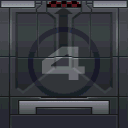Reviewed by Tempest
No alternate review available
Things are heatin'up! Spyro, the feisty,
fire-breathing dragon is back and he's ready to take on a
whole new adventure.
Spyro 2 - Ripto's Rage! also known as Spyro 2 - Gateway to Glimmer in Europe and Autralia, is the sequel to Spyro the Dragon released a year earlier. The basic concepts of the game are still more or less the same as the previous installment; it is a 3D action platformer game designed for the PlayStation, sub-levels are accessed through portals and the game uses a 3rd person view controlled by the player. Spyro is accompanied with Sparx who acts as his health indicator (he still doesn't say a word, just as in the previous game). Spyro still has to gather treasures but must find orbs and talismans instead of freeing dragons in order to access later levels. The game has a guidebook to list Spyro's progress across the different levels. The game contains a total of 28 levels (including Dragon Shores that is only accessible after defeating Ripto) with three main levels (Summer Forest, Autumn Plains and Winter Tundra) that are significantly bigger and more complex than the main levels of first game.
Despite many similarities, the developers included several improvements and other changes over the previous game:
• Spyro can now swim and can learn (read: buy) new abilities as he progresses through the game; such as being able to climb ladders, swim under water (Spyro can hold his breath indefinitely) and headbash. He can also hold different objects in his mouth and spit them out to perform an aimed attack. He is also getting a bit more experienced at flying since he can flap his wings at the end of a glide in order to give himself a little boost. Note that he somehow forgot how to roll sideway; an ability that would have made boss fights much easier.
• Levels are also designed to keep your interest in finding everything with small side-quests and mini-games that allow you to explore the level more thoroughly. Moreover, each level has its own little setting and theme, which allows the player to not feel like s/he is doing the same thing over and over again.
• The dragons from the previous games have been replaced with various anthropomorphic NPCs who have a bit more dialog than the dragons from the previous game. But on the downside, some of those NPCs often speak in game mechanisms and not like a normal person would. For example, instead of saying "run to the edge, then jump and glide to this platform over there", they will directly ask you to press certain buttons on the game controller which is unnecessary (even for neophytes) and this tends to breaks immersion.
• In each sub-level, defeating enemies no longer reward the player with gems but they will release a "spirit particle" (i.e. the enemy's life force) instead. When enough them have been defeated, this activates one or more "powerup" arches that specifically enhances one of Spyro's ability for a limited time (such as supercharge, superfly, superflame, etc).
• Save points are also much faster and seamless as you only need to pass near a fairy and she will record your progress automatically.
• A somewhat negative point is that NPCs such as Elora or Hunter can somehow duplicate themselves and are able to physically be at multiple locations at the same time... even in the same level. For example, if you meet them at the entrance of a castle, then run down a corridor, they will wait for you at the end to tell you additional information despite that it isn't really possible for them to move that fast or be here and back there at the same time.
• Levels are rather random in terms of thematic and in regards to who Spyro is helping. For example, in a level, Spyro will help Land Blubbers (blob-like creatures) against attacking Breezebuilders (birds people), while in another he will fight the Land Blubbers to help the Breezebuilders with little indication on who is right or wrong, or that Spyro even cares to find out.
• All flight levels have a hidden challenge, so Spyro must complete the obstacle course and then try again to find a person (usually Hunter) to be given the special challenge (which will provide an additional orb as a reward).
• Finally, a huge thumb up to the developers who managed to make this game from a dragon's point of view and by this I mean the way Spyro behaves. For example, in a mini-game, Spyro must play hockey, he can skate quite nicely but instead of pushing the puck, he just eats and keeps it in his mouth before spitting it into the net of his opponent... If you were a quadruped dragon, you would probably take that kind of shortcut regardless if this is within the rules of the game (as he can't hold a hockey stick).
So there are plenty of new things in this game to feel like something new.
Storyline:
The story begins sometime after the defeat of Gnasty Gnorc; the rain has been pouring for an extended period of time in the Artisans (the Land of Dragons) and both Spyro and Sparx are tired of the bad weather and wishing that they would be somewhere warm and sunny instead. Noticing the portal to Dragon Shores, they decide that it would be a good choice to go on vacations.
Meanwhile in the world of Avalar, the Professor, Elora and Hunter are gathered around a portal. The Professor has designed it to link their world to the Dragons World in the hope of bringing a dragon to Avalar in order to defeat Ripto; a red demon-looking guy who is causing them a lot of trouble. Hunter argues that a dragon would probably just make Ripto even more angry and that dragons have claws, teeh and can spit fire and they sound much more dangerous than Ripto. But Elora quickly points out that this is exactly the point: a dragon is the only creature that Ripto truly fear. As Spyro steps into the portal to Dragon Shores, he is sent to Avalar instead.
After a brief confusion, Ripto along with Crunch and his steed Gulp, make they appearance. Ripto quickly destroy the portal using his magic scepter before noticing that the trio before him brought a dragon to Avalar. This makes him very angry but before he could do anything, a fairy distract Ripto and as Gulp tries to hit her with his club, he misses and smashes Ripto instead. His scepter flies off his hands and his not-too-bright steed Crush eats it, resulting in the scepter destruction. Ripto, probably feeling vulnerable, decides to retreat to Avalar's Summer Forest. And thus the adventure begins: Spyro must recover enough orbs to power a new portal for him to return home but before doing so, he must also recover all the talismans in each sub-level so he can open the level Talisman Door and drive Ripto out of that level.
The game follows more or less the same concept as the previous game but when Spyro finish a level, he gains a Talisman and when he performs side-quest or searches around the main level, he can acquire Orbs. Talismans are necessary to move to later levels while Orbs are necessary to activate certain portals and repair the superportal to send Spyro back to his world. Gems are used to pay a shady character called Moneybags so he can teach Spyro new abilities, open doors, activate bridges, provide access to new portals and so on. Note that Moneybags isn't good or evil; he's only interested in money and will charge a high price for his assistance no matter how simple the task.
If Spyro manages to recover everything (there are 10000 gems and 64 orbs to collect), he will gain access to a special and permanent superflame powerup in the Dragon Shores level at the end of the game which has limited usefulness at that point. Also, a new page in the Guidebook will appear once you have finished the game and it will listing your Skill Point (aka achievements). If you have managed to accomplish half (8) of them, this will unlock the Epilogue in the Guidebook, while performing all 16 will extend the Epilogue to include Basil the Explorer's Faunus Mortas: Extinct Creatures of Avalar.
Graphics:
Graphics are not terribly different from the previous game Spyro the Dragon. Much of the problems in the first game remain with Spyro being relatively well detailed and enemies having low details and textures. Since it's the same console, the hardware hasn't changed or improved over time so it's unrealistic to expect graphics to be a magnitude better as it is often the case for sequels done on PC.
As with Spyro the Dragon, using an emulator such as ePSXe provide much better graphics and less pixelation. You can see the difference between the game played on the original PS1 and when playing it using the ePSXe emulator. Though, playing the game using a higher resolution than the PS1 sometimes results in visible lines in some dialogue boxes. It is even possible to see how those boxes are programmed with the corners, bottom and top parts being different objects that are not perfectly aligned together. However, the visual improvements that an emulator provides far outweigh such small glitches. Using DuckStation, another PS1 emulator, solves many of these problems and doesn't require the installation of additional plugins (such as "PeteOpenGL2Tweak" and "Pete's OpenGL2 PSX GPU") to be fully functional.
If you have never played the game and unless you are into retro-gaming, then you probably should try the remake of this series by playing the Spyro Reignited Trilogy (2018). That remake has much better graphics while still being extremely faithful to the original game.
Sound & Music:
The music is not distracting or annoying, some are a bit odd but it contains diversity that should be okay for people with different music tastes. However, the music is more likely to feel repetitive as the levels are bigger and it take a lot more time to acquire every orbs and gems than in the first game.
R a t i n g
| Graphics: | | (7.0/10) - Good |
| Sound & Music: | | (7.5/10) - Good |
| Storyline: | | (6.0/10) - Average |
| Play Control: | | (7.0/10) - Good |
| Innovation: | | (6.5/10) - Average |
| Overall: | | (7.5/10) - Good |
|
Note: the overall is not an average, but more a general appreciation of the game as a whole.
A rating of 5/10 should be considered as something not good but not bad either (# bad points = # good points).
|

























